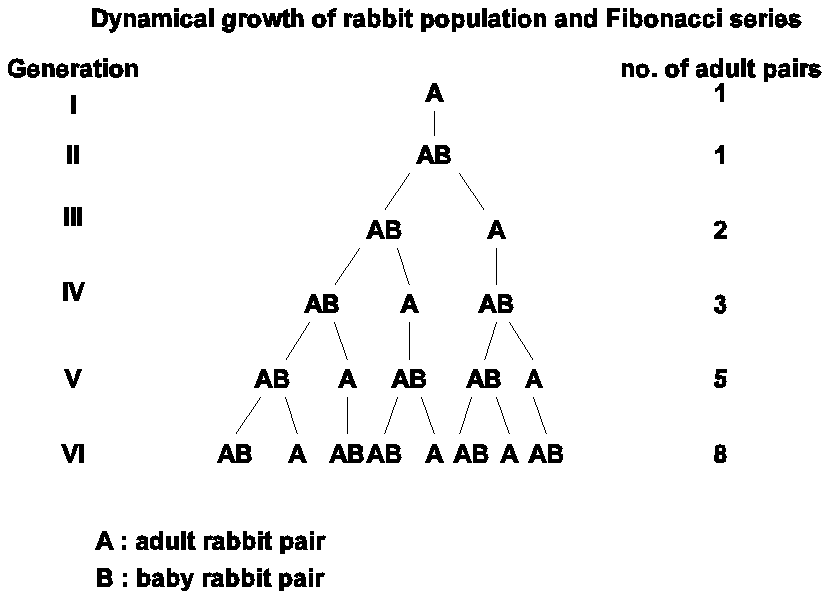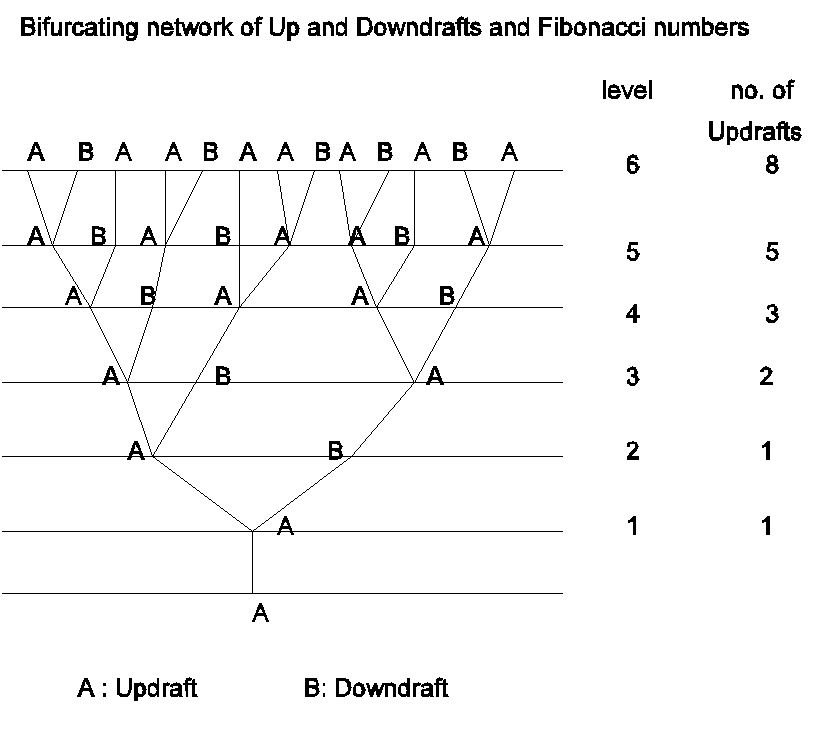The Fibonacci mathematical series was discovered in 1209 by Leonardo
of Pisa, known as Fibonacci (Kappraff, 1992 Reference)
while computing the total number of adult rabbits in successive
months starting with a single adult rabbit pair and assuming that
each adult rabbit pair produces one pair of offsprings each month
and that baby rabbit pairs became adults in one month's time. The
growth of rabbit population is shown as a branching network in
Figure 3.
FIGURE 3

The total number of adult rabbit pairs in successive months
follow the Fibonacci mathematical series. The growth of
adult rabbit population as shown in Figure 3 represents a
hierarchical ramified network or a selfsimilar fractal network.
Ramified branching network systems in nature can be similarly
shown to generate the Fibonacci mathematical number
series. For example, the branching network of updrafts and
downdrafts in vortex roll circulations in atmospheric flows(Figure
4 ) can be shown to be represented by a hierarchy of branches
with multiple sub-branches.
FIGURE 4

In Figure 4, A represents an updraft. At the first level, forking structure AB is generated with formation of sub-branch(downdraft) B. At the second level, A again generates the forking structure AB , while the sub-branch(downdraft) B of level 1 now generates the updraft A . Updrafts alone produce forking structure with formation of sub-branch(downdraft) B which then gives rise to updraft A at the next level. Continuing such a system of bifurcation results in the generation of Fibonacci numbers sequence for the total number of updrafts(A ) at each level. In summary, the integrated sum of smaller scale networks contribute to form large scale networks. Branching networks may therefore be considered as a hierarchy of selfsimilar networks or fractals. Fractal architecture to the spatial pattern is therefore a signature of cumulative integration (summation) process inherent to dynamical growth processes of the system. For example, the fractal network of a river drainage basin serves to collect water from the smallest of tributaries (branches) and integrate it into the main river flow.